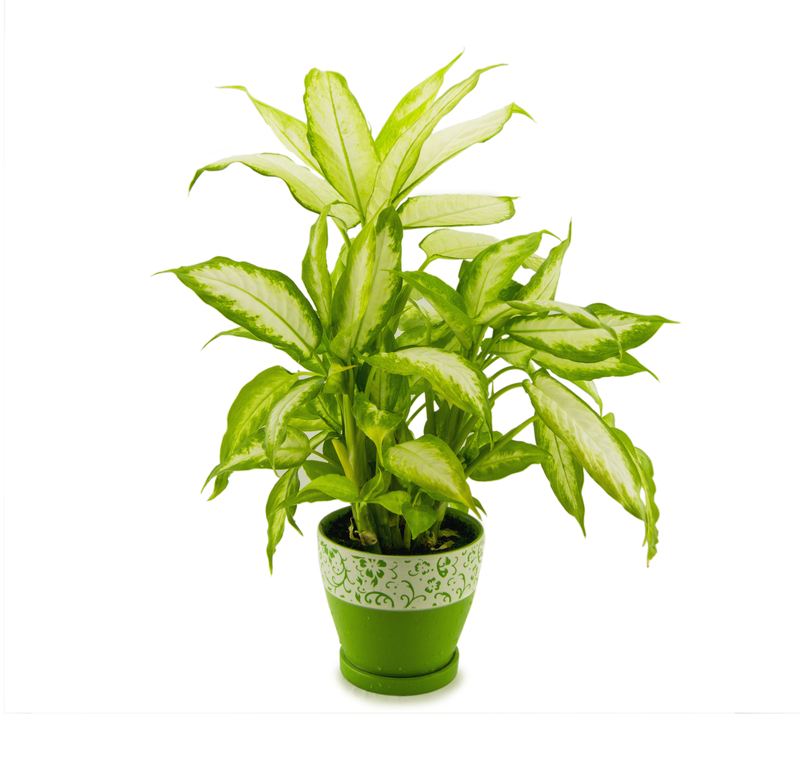Cultivating Gardens to Combat Climate Change Challenges
Posted on 13/06/2025
Cultivating Gardens to Combat Climate Change Challenges
As our world faces intensifying climate change, transforming our landscapes by cultivating gardens can become a powerful tool to mitigate environmental threats. Whether you're working with a sprawling backyard or a modest urban balcony, strategically developed gardens have the potential to combat climate change challenges while fostering biodiversity, improving air quality, and enhancing community resilience.

Understanding the Connection: Gardens and Climate Change
Climate change presents far-reaching consequences: rising temperatures, shifting precipitation patterns, increased frequency of extreme weather events, and diminishing biodiversity. Gardening for climate change mitigation directly addresses many of these issues. By cultivating gardens, individuals and communities can sequester carbon, regulate temperatures, manage stormwater, and provide critical habitats for pollinators and wildlife.
Why Gardens Matter in the Age of Climate Change
- Carbon Sequestration: Plants absorb atmospheric carbon dioxide and store it in their biomass and root structures. This process reduces the greenhouse gases responsible for global warming.
- Heat Island Mitigation: Urban gardens and green roofs can significantly lower local temperatures by shading surfaces and releasing water vapor into the air.
- Biodiversity Preservation: Diverse plantings provide refuge and food for at-risk insects, birds, and small mammals, maintaining ecosystem balance.
- Stormwater Management: Gardens with permeable soil can absorb rainfall, reducing runoff, soil erosion, and the burden on urban drainage systems.
- Food Security: Edible gardens can increase local food availability, reducing emissions from food transportation and enhancing resilience to supply disruptions.
Strategies for Cultivating Climate-Resilient Gardens
So, how can you combat climate change through gardening? Explore these best practices and their scientific foundations.
1. Embrace Native and Climate-Adapted Species
Native plants have evolved to thrive in your local environment, making them more resistant to pests, disease, and extreme weather. Because they require fewer resources, such as water and fertilizers, they have a minimized environmental footprint. Additionally, climate-adapted species that can withstand anticipated changes (like drought or intense rainfall) will ensure your garden remains robust as conditions shift.
- Choose a diverse array of species to maximize resilience and support a variety of pollinators.
- Reduce reliance on resource-intensive ornamental plants, which often require more maintenance and water.
2. Prioritize Soil Health for Carbon Storage
Soil acts as a major carbon sink in the earth's system. Healthy, organic-rich soils not only grow stronger plants but also sequester more carbon. Boost your soil's productivity and climate-fighting potential by:
- Adding compost and organic matter
- Practicing minimal tilling to avoid disturbing soil structure and releasing stored carbon
- Growing cover crops during off-seasons to replenish soil nutrients and provide continuous ground cover
3. Conserve Water and Harvest Rain
Water scarcity is a growing concern as climate challenges intensify. Smart gardening techniques can significantly cut your water usage while supporting healthy plant growth:
- Install rain barrels and irrigate with collected rainwater rather than relying solely on municipal sources.
- Mulch beds to retain soil moisture and reduce evaporation
- Choose drought-tolerant plants that require less frequent watering
4. Increase Tree Planting and Urban Forest Cover
Trees are among the most effective natural climate change solutions. They remove carbon dioxide, provide habitat for wildlife, lower air temperatures, and even filter harmful pollutants.
- Plant fast-growing native trees in your garden and encourage community-wide greening efforts.
- Incorporate a canopy of shrubs and understory plants to support diverse garden layers and additional carbon storage.
5. Foster Biodiversity and Support Pollinators
Biodiverse gardens are more resilient to pests, diseases, and extreme weather. They also play a vital role in supporting the insects, birds, and animals that make up healthy ecosystems.
- Grow a mix of flowering perennials, wildflowers, and herbs to provide nectar and habitat throughout the year.
- Avoid pesticides and synthetic chemicals to protect beneficial insects and soil life.
6. Reduce, Reuse, and Recycle Garden Materials
Garden waste is a significant contributor to landfill methane emissions. Cutting down on waste and making the most of available materials supports sustainability and reduces your garden's overall carbon footprint.
- Compost kitchen scraps and garden clippings to create nutrient-rich soil amendments.
- Repurpose old containers, wood, and stones to build raised beds or garden paths.
Urban Gardening and Climate Change: Maximizing Limited Spaces
Urbanization and population growth increase the challenges of climate adaptation. Nevertheless, urban gardening provides innovative pathways to combat environmental threats in densely populated areas. Through a mix of community gardens, rooftop farms, and vertical planting, cities can absorb carbon and reduce urban heat islands, while giving residents access to fresh, local produce.
Community Gardens
Community gardens convert underutilized lots into productive, green oases. They not only help absorb rainwater and purify the air, but also foster social connections and food security. These shared vegetable plots can:
- Lower neighborhood temperatures
- Attract pollinators and beneficial wildlife
- Reduce food miles and emissions from long-distance transportation
Rooftop and Vertical Gardens
Rooftop gardens and living walls are increasingly popular in urban centers. These gardens:
- Add insulation to buildings, reducing energy use for heating and cooling
- Capture rainwater, easing pressure on city drainage systems
- Provide valuable green space for recreation and relaxation
Innovative Technologies for Climate-Smart Gardening
Adopting new technologies and data-driven approaches can further maximize the climate-fighting advantages of gardens.
- Soil sensors to monitor moisture and nutrient levels, optimizing irrigation and fertilization
- Automated water-saving irrigation systems that deliver water only as needed
- Mobile apps and platforms that connect home gardeners to climate data, best practices, and local biodiversity trends
Biochar: A Powerful Carbon Sink
Biochar is a charcoal-like substance created by burning plant matter under low oxygen. Mixing biochar into garden soils can greatly increase carbon sequestration, improve fertility, and limit methane and nitrous oxide emissions from decomposing organic matter.
Gardening as a Community Climate Action
While individual efforts are valuable, collective action magnifies impact. Gardeners can encourage neighbors, schools, and organizations to join in, multiplying the climate mitigation benefits.
Schools and Educational Programs
School gardens teach children about food systems, ecology, and sustainability from an early age. These hands-on projects promote lifelong environmental stewardship and climate awareness.
Citizen Science and Climate Monitoring
Gardeners can join citizen science programs to track phenology, pollinator populations, and other environmental indicators. Such real-time data can inform researchers and policymakers about shifting climate patterns and effective interventions.
The Role of Policy and Community Support
To maximize the climate benefits of gardening, policies should encourage the creation and maintenance of green spaces at every scale. Local governments, conservation agencies, and non-profits can:
- Offer grants, incentives, and training for sustainable gardening projects
- Protect existing gardens, parks, and green corridors from development
- Integrate climate-smart landscaping into urban planning and building codes
Long-Term Benefits of Climate-Resilient Gardening
- Cleaner air and water through filtration and reduced pollution
- Lower energy bills by using plants as windbreaks and insulation
- Enhanced mental and physical health via stress reduction, active recreation, and access to healthy food
- Increased property value and neighborhood appeal

Getting Started: Steps to Cultivate Climate-Conscious Gardens
If you're inspired to combat climate change through gardening, here's how to get started:
- Assess your site: Examine sunlight, soil type, moisture, and microclimate for optimal plant selection.
- Set concrete goals: Are you prioritizing food production, biodiversity, or cooling effects? This will guide your plant choices and layout.
- Research native and climate-adapted plants: Connect with local nurseries, extension services, or botanical gardens for recommendations.
- Build healthy soil: Begin composting, minimize disturbance, and experiment with cover crops.
- Create biodiversity zones: Mix trees, shrubs, perennials, and annuals to mimic natural systems.
- Install water-wise features: Set up rain barrels, drip irrigation, and drought-resistant beds.
- Invite pollinators and wildlife: Provide nesting habitats, leave some deadwood or brush, and avoid pesticides.
- Engage your community: Invite neighbors to participate, share produce, and spread awareness about sustainable, climate-friendly gardening.
Conclusion: The Impact of Gardening Against Climate Change Challenges
The act of cultivating gardens to combat climate change is more than personal enrichment--it's a collective investment in our planet's future resilience. Eco-conscious gardening stores carbon, shelters wildlife, cools cities, and builds more robust communities. Whether you are a novice or expert, every plant helps tip the balance against the threats of global environmental change. Together, our gardens can nurture not only nature, but also hope for future generations.
Start cultivating your garden today and take a stand against the escalating challenges of climate change. The future truly begins at your doorstep--one seed at a time.

